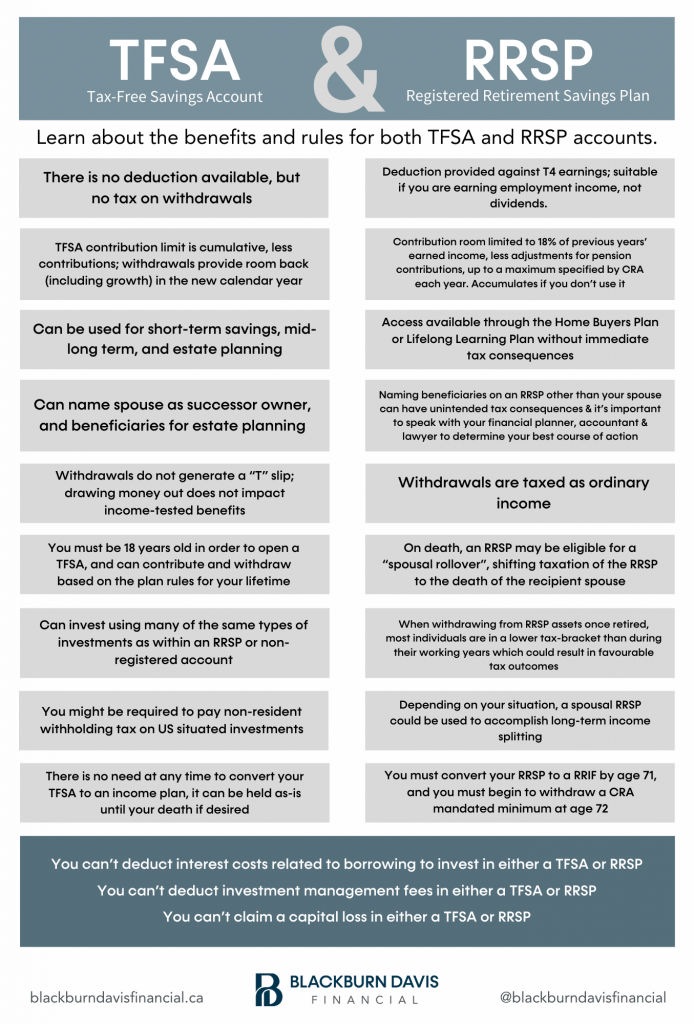
WHAT IS THE DIFFERENCE BETWEEN A TFSA & RRSP?
We often get asked what the differences are between a TFSA (Tax-Free Savings Account) and RRSP (Registered Retirement Savings Plan) account.
We’ve put together this summary to review the primary differences and rules pertaining to each account. If you have any questions, please reach out to us here.

TFSA (Tax-Free Savings Account):
- There is no deduction available, but no tax on withdrawals
- TFSA contribution limit is cumulative, less contributions; withdrawals provide room back (including growth) in the new calendar year
- Can be used for short-term savings, mid-long term, and estate planning
- Can name spouse as successor owner, and beneficiaries for estate planning
- Withdrawals do not generate a tax slips; drawing money out does not impact income-tested benefits
- You must be 18 years old in order to open a TFSA, and can contribute and withdraw based on the plan rules for your lifetime
- Can invest using many of the same types of investments as within an RRSP or Non-Registered account
- You might be required to pay non-resident withholding tax on US situated investments
- There is no need at any time to convert your TFSA to an income plan, it can be held as-is until your death if desired
RRSP (Registered Retirement Savings Plan):
- Deduction provided against T4 earnings; suitable if you are earning employment income, not dividends
- Contribution room is limited to 18% of previous years’ earned income, less adjustments for pension contributions, up to a maximum specified by CRA each year. Accumulates if you don’t use it
- Access available through the Home Buyers Plan or Lifelong Learning Plan without immediate tax consequences
- Naming beneficiaries on an RRSP other than your spouse can have unintended tax consequences and it’s important to speak with your Financial Planner, Accountant, and Lawyer to determine your best course of action
- Withdrawals are taxed as ordinary income
- On death, an RRSP may be eligible for a “spousal rollover”, shifting taxation of the RRSP to the death of the recipient spouse
- When withdrawing from RRSP assets once retired, most individuals are in a lower tax-bracket than during their working years which could result in favourable tax outcomes
- Depending on your situation, a spousal RRSP could be used to accomplish long-term income splitting
- You must convert your RRSP to a RRIF (Registered Retirement Income Fund) by age 71, and you must begin to withdraw a CRA mandated minimum at age 72
Both TFSA & RRSP Accounts:
- You can’t deduct interest costs related to borrowing to invest in either a TFSA or RRSP
- You can’t deduct investment management fees in either a TFSA or RRSP
- You can’t claim a capital loss in either a TFSA or RRSP
Please reach out to us for further information regarding these accounts, or if you have a specific question pertaining to your individual situation.
